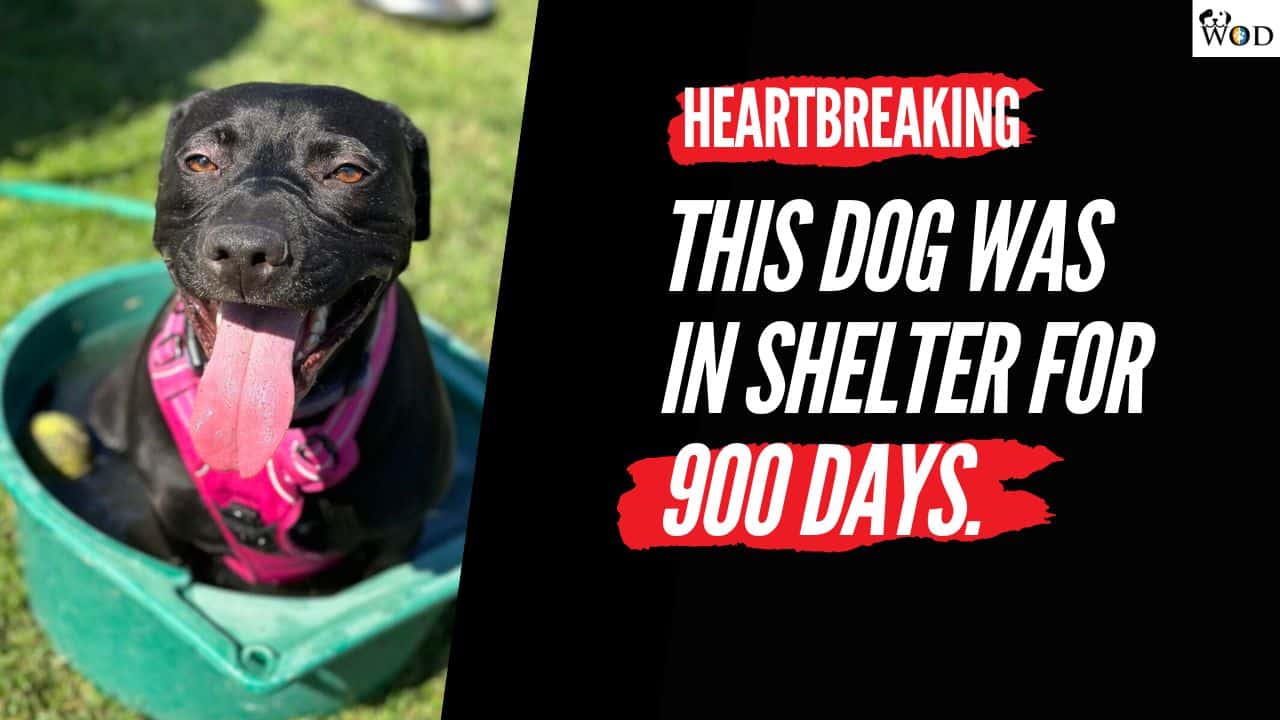Dealing with Husky shedding can often feel overwhelming, especially if you’re unprepared for the flurry of fur that comes with owning this majestic breed. The plush, straight, and smooth-lying double coat of a Husky is indeed beautiful, but it also means a significant amount of shedding.
However, understanding and managing your Husky’s shedding is entirely possible, and this guide is here to help.
To effectively control your Husky’s shedding, it’s crucial to understand the reasons behind this natural process. Knowing what triggers the shedding and what to expect, you can better prepare for the seasonal fur storms.
In this comprehensive post, we’ll dive deep into the world of Husky shedding, covering key topics such as:
- The underlying reasons why Huskies shed
- Identifying the start of the shedding season and what it entails
- Recognizing abnormal shedding patterns
- Practical strategies to minimize and manage your Husky’s shedding
Plus, I’ll share my top 7 tips for reducing and controlling Husky shedding effectively.
Ready to tackle the challenge? Let’s embark on this furry journey together!
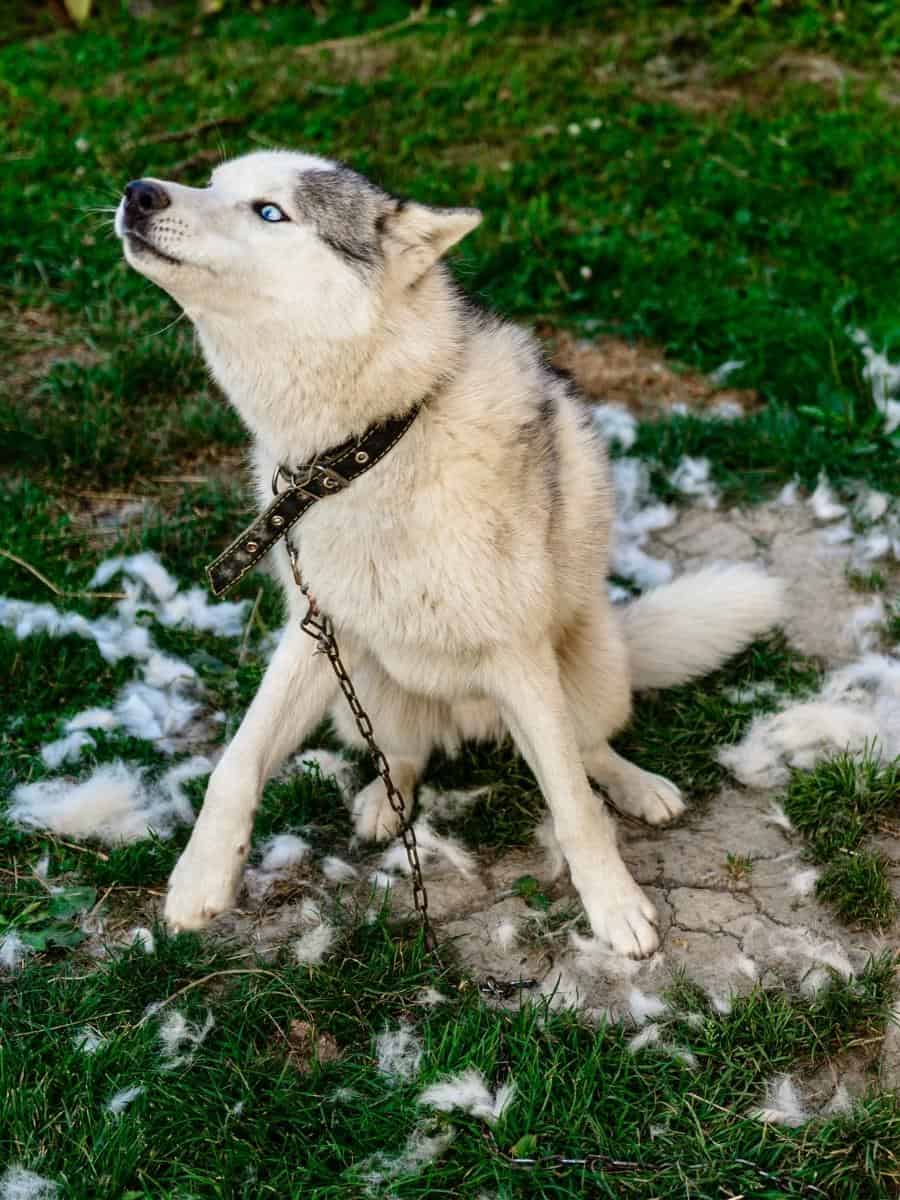
Shedding in Huskies
If you’re thinking about getting a Husky, you can’t help but notice their beautiful wolf-like appearance, piercing blue eyes, and gorgeous plush coat. However, you might be mistaken in thinking they won’t shed.
Huskies do shed – and they shed pretty regularly. They are naturally heavy shedders due to their double coat and consistently shed all year round.
Shedding also becomes extremely heavy in the spring and fall seasons when clumps of their dense undercoat fall out in line with the season change and variation in temperature.
This heavy shedding is typical of breeds with a double coat, like the Husky, even though they have a medium-length, straight coat. In the canine world, it’s known as “blowing the coat.”
Causes of Shedding
You’d be surprised at how much some smooth-lying, medium-length coat breeds actually shed!
You will find clumps of fur in places you never believed were possible, from your kitchen cupboards to the insides of your coat pockets. Husky fur gets everywhere! But we must consider his coat to better comprehend why Huskies shed so much.
Huskies shed a lot due to their thick double coat.
While the undercoat comprises a layer of fine, soft hairs that act as insulation in the winter and cooling in the summer, the topcoat is wiry, harsh, and waterproof. Old and damaged hair will molt as it goes through its normal growth cycle.
Double-coated dogs have two layers of fur. If we consider dog coat genetics, each hair follicle will have 1-2 guard (topcoat) and several undercoat hairs. Puppies have a single coat when they are born, but they begin to grow an adult coat around 3 months old and keep it until they are about a year old.
Wolves, the domestic dog’s closest living relative, also have a double coat, which is considered an ancestral characteristic. However, the undercoat is absent in single-coated breeds due to a gene mutation, so they shed less because the undercoat will molt more with the change of season.
If we look back at the history of the Husky, as sled dogs working in extreme weather, they needed their thick, wooly undercoat to protect them from the cold. Their guard coat provided them with added protection and acted as an extra waterproof layer.
Siberian Huskies still make excellent outside working dogs because they can withstand various weather conditions. Their topcoat feels oily, similar to the German Shepherd’s coat.
Watch This Gorgeous Husky Being DeShedded…
Husky Shedding Season
You might not be aware that the Husky has a schedule for when it sheds. In addition to their typical yearly-round shedding, Huskies shed more in some months than others.
The Husky shedding season occurs twice yearly, specifically in the spring and fall. Your dog’s coat will change at this time, which can take two to three weeks. Thus, the Husky shedding season falls in March, April, and May, as well as September, October, or November.
Your Siberian Husky can adapt to the new climate by changing his coat as the season changes. As the temperature warms, he will eliminate his old winter undercoat to make room for a lighter summer coat.
He will get a thick, warm coat to prepare for the winter once the temperature becomes colder and shed his lighter undercoat. He can now live comfortably all year round.
Each time, his thick undercoat will start to emerge in clumps for two to three weeks. You can’t help but notice it fluttering all over the place!
As your dog molts all his dead undercoat during this period, there will be a lot of furious shedding. His coat won’t look too pretty for a while, but it doesn’t take long before it evens out and looks amazing again.
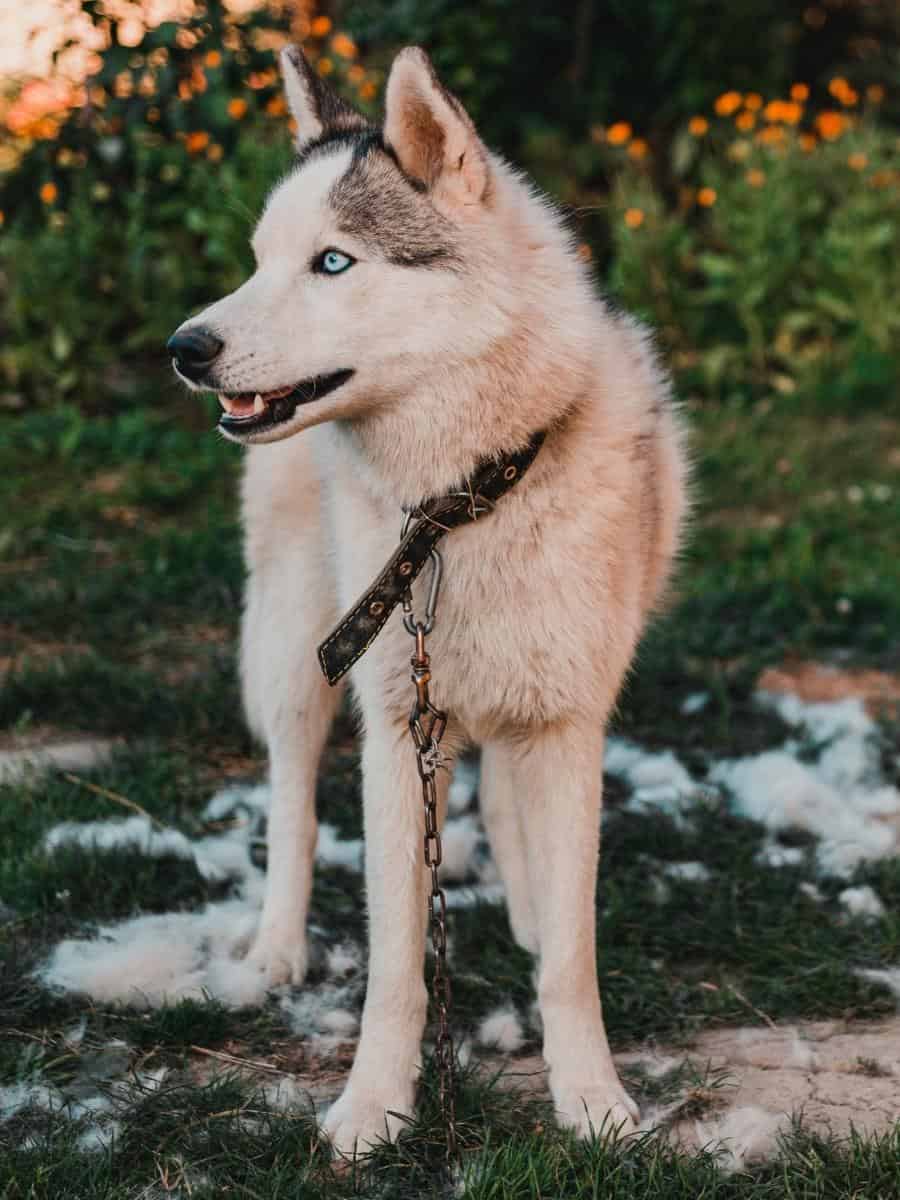
Abnormal Excessive Shedding
Now that you understand your Husky’s typical shedding pattern, you must also know that not all shedding is normal. Some doggy hair loss patterns suggest health issues that a veterinarian should handle.
If your Husky suddenly starts to shed unnaturally, you must find out why.
Due to health reasons, Huskies may shed suddenly (outside their usual pattern). Causes include a poor diet, allergies, dehydration, parasites, stress, or anxiety. Less common causes are a reaction to a medication, hypothyroidism, Cushing’s disease, underdeveloped hair follicles, or pregnancy.
Vets can differentiate between normal shedding and fur loss caused by health, nutritional, or environmental causes. The following signs and symptoms can identify abnormal shedding in your Husky:
- Dry or brittle hair
- Irritation, open sores, blisters
- Bald patches
- Dislike of petting
So, what’s the deal with these anomalies? Let’s look in more detail at the factors that can cause atypical fur loss in canines:
- Poor diet. A healthy, balanced diet provides a steady supply of vital nutrients. Your Husky’s hair needs these nutrients to stay securely in the hair follicles. As such, a poor diet with deficiencies will cause hair loss.
- Dehydration. When your bestie is dehydrated, blood flow and oxygen delivery to tissues and organs, including the skin, are affected. The decrease in skin suppleness causes the fur to fall out easily.
- Parasites, ticks, lice, and fleas. All of these itch your Husky’s skin, and as a result, he will bite or scratch. This causes the dog’s fur to fall out, and the chewed skin can become infected.
- Underdeveloped hair follicles. It isn’t necessarily hereditary, although this may be congenital. Hair loss that is patchy or severe is caused by improper hair follicle development.
- Cushing’s disease. A benign tumor causes this in the pituitary, which causes excessive production of the stress hormone cortisol, causing hair loss in canines. 100,000 dogs are diagnosed with Cushing’s disease each year, with dogs older than six years at higher risk.
- Hypothyroidism. Symptoms of hypothyroidism include increased shedding, hair loss, and thinning. However, it’s not a prevalent disorder in dogs, and Huskies are not among the three most prone breeds.
- Skin trauma. Abnormal shedding can be caused by skin trauma, such as bacterial and fungal infections, food, and other allergies. Some drugs, such as steroids, inflammatory disease, and burns, can also cause skin trauma. Temporary hair loss can also occur during pregnancy, nursing, or recovering from an illness.
- Stress and anxiety. Behavioral problems that cause stress and anxiety, such as separation anxiety or OCD, can drive your Husky to chew his hair and skin, leaving patches. Acral lick dermatitis is the name of this condition. Parasites and other allergic conditions can also cause it.
Whatever the cause of your Husky’s unnatural shedding, prevention and solutions are similar to controlling normal heavy shedding, year-round or seasonal.
Husky Shedding Solutions
Owning a Husky is a gratifying experience. But, it does come with its downside. No matter what time of year, your doggo won’t stop shedding! You can’t completely stop shedding, but you can surely do things to reduce and control it.
Learn More About Husky Shedding Solutions in this video…
How to Reduce Husky Shedding
If you jumped straight to this section, here’s my TL;DR answer on reducing Husky shedding…
To reduce shedding in your Husky, brush daily and use a de-shedding tool twice weekly and more often when blowing the coat. Feed a diet that targets a healthy coat and skin, including Omega fatty acids. Keep your Husky hydrated, bathe him 3-4 times a year, and control fleas and parasites.
It’s best, in my opinion, to attack your Husky’s shedding from all angles. That’s why I’ve compiled a list of seven easy-to-implement tactics for controlling and reducing your Husky’s shedding. So, here are my more in-depth solutions:
1. Get a De-shedding Tool Suited To Huskies
The best way to groom your Siberian Husky is with a de-shedding tool designed mainly for a double coat. These tools cater to your dog’s dense undercoat and safely dig out loose hairs that might otherwise be spread all over your home!
They are ideal when your bestie is “blowing his coat.” You’ll need to use this tool 2-3 times weekly during the heavy shedding season.
I use the FURminator undercoat de-shedding tool on my dog (from Amazon). It does a superb job of getting through your dog’s protective coat and removing all the dead and loose hair without hurting or harming his skin.
Over the years, I’ve tried several de-shedding products, but I’ve never found one as effective as the FURminator.
Note: Clicking the above link(s) will take you to Amazon or an online store where we have an affiliate relationship. If you make a purchase, we may earn a commission at no additional cost to you.
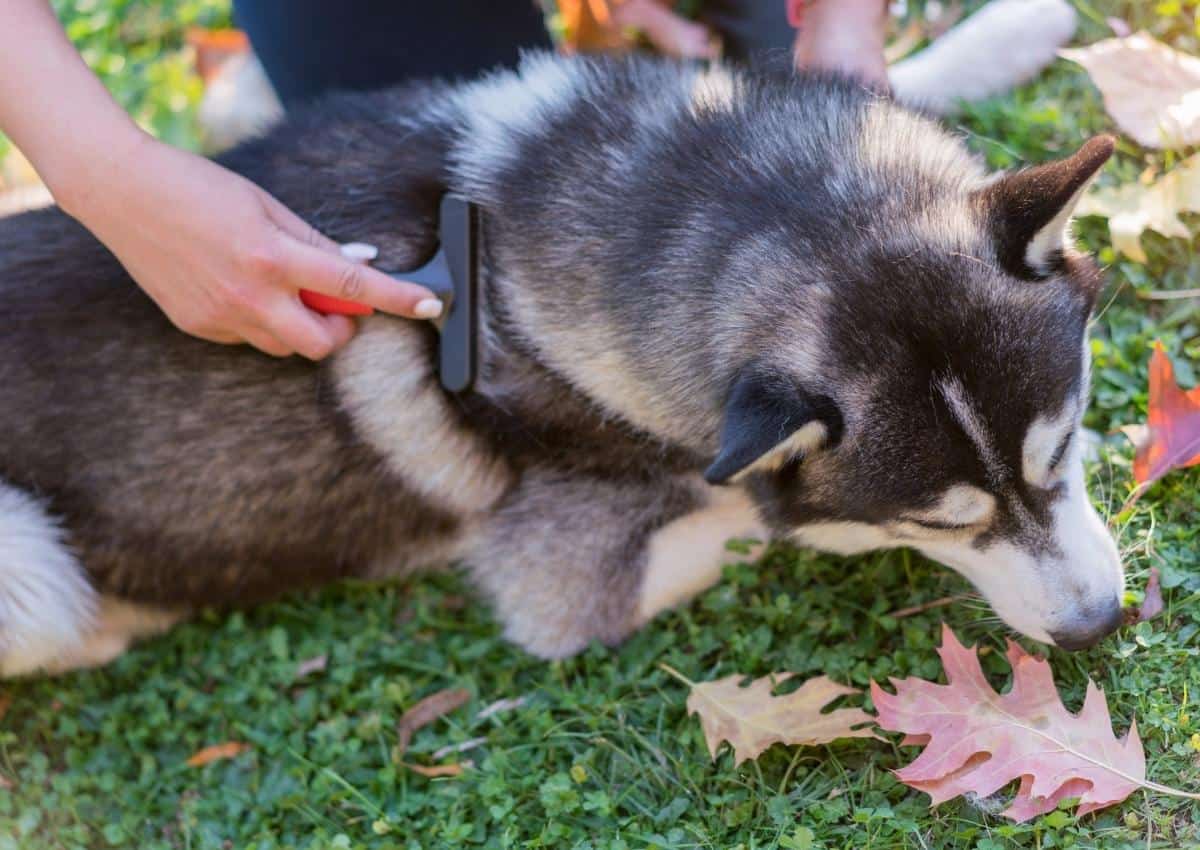
2. Get a Shedding Brush Suited To Huskies
Your Husky will shed all year long, just like most dogs. Although you can’t completely stop it, grooming using a slicker brush frequently will prevent hair from constantly settling on your furniture, carpeting, and clothing.
It doesn’t take all that much effort to brush him daily, either! Depending on your doggo, 2-3 times per week may be sufficient.
There are many good slicker brushes that you can get for your Husky’s topcoat that will remove pet dander and keep him looking smart.
I like the Hertzko Self-Cleaning Slicker Brush. It’s perfect for removing tangled hair and is super simple to use. The bristles are delicate, bent wires that can groom the undercoat effectively without irritating your pet’s skin.
It’s easy to clean, too, as it has a button you click, which ejects all the fur from the brush (like the FURminator).
The amount of hair your Husky sheds will be far less if you brush his entire coat several times instead of merely brushing him once a week.
3. Groom and Bathe Your Husky 3-4 Times a Year
So, as I previously stated, your Husky will change his coat twice a year, once in the fall and once in the spring. Bathing and grooming him during these times will help eliminate more hair at once, even though you can’t stop the hair clumps from eventually falling out.
Instead of waiting for his undercoat to fall out naturally during this time, you can loosen any leftover fur and remove it at bathing time. Never over bathe because this causes your Husky’s skin to dry and lose its natural oils, leading to more shedding.
You can try special de-shedding dog shampoos that loosen the undercoat during the bath. You can also find ones enhanced with Omega 3 & 6 fatty acids, such as the FURminator deShedding Ultra Premium Dog Shampoo.
I’ll cover the benefits of these at number 7 below.
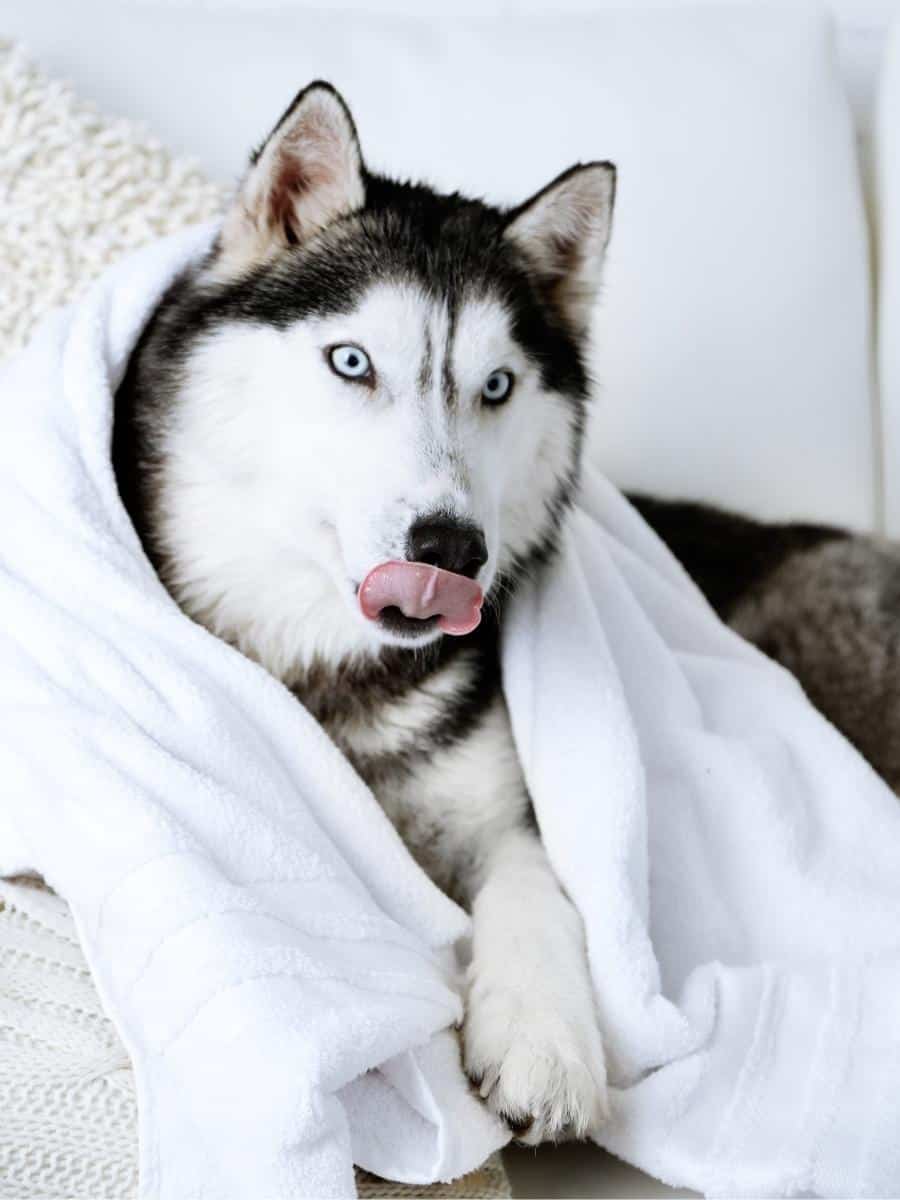
4. Switch to Food That Targets The Coat and Skin
You may have already given some thought to the food you feed your Husky, but did you realize that the type of food you feed him has a significant impact on his shedding routine?
Inexpensive dog food is primarily made of ingredients that some dogs have a hard time digesting, such as corn and grain, not to mention added preservatives and chemicals.
Instead, choose a dog food with high-quality protein as the main ingredient. When considering the nutritional requirements of animals, a protein deficiency results in a dull and unkempt coat.
If your Husky is not getting proper nutrition, the protein he’s receiving will maintain muscle mass, leaving his coat to suffer.
Sure, it will be more expensive, but it will help your Husky by reducing his daily shedding and maintaining a long and healthy life.
By selecting a diet that targets the nutritional needs of your Husky, he’ll maintain a gorgeous, healthy coat, and you can greatly reduce the amount of year-round shedding.
Do you want to learn more about what to feed your dog? Check out this guide on the best diet for Huskies for more nutrition information, the many types of diets for your dog, and exactly what he can and can’t eat.
Alternatively, if you’re a home feeder looking for recipes, head to this post, 5 Top Homemade Dog Food Recipes For Shedding.
5. Keep Your Husky Hydrated
You might not even realize it, but allowing your Siberian Husky to drink more water daily can reduce the amount of shedding. That’s because canines will shed more when they’re dehydrated.
You can improve your Husky’s overall health and reduce the amount of fur that ends up all over your home by giving him approximately one ounce of water for every pound of body weight.
I like the idea of a dog water fountain, such as the Petsafe Drinkwell, that tempts your dog to drink and saves you from constantly having to refresh his water. I like this one as it is a good size, looks good, and includes carbon filters to remove bad taste and odors from the water.
Pro Tip! Try giving your Husky ice cubes in the summer to keep him hydrated. You can also treat your doggo to frozen fruits such as strawberries to help quench his thirst. These also make a healthy alternative to store-bought treats.
6. Stay Current With Flea Treatment
Flea treatments will not stop or prevent your Husky from shedding, but they will stop him from scratching and biting himself excessively if he gets fleas!
The more your doggo relentlessly scratches to release himself from the discomfort of fleas or ticks, the more fur he dislodges. No fleas mean less scratching and less shedding.
Remember to stay abreast with your Husky’s flea treatment. I treat my dog every three months, but check with your vet about what’s best for your dog.
7. Include Omega Fatty Acids in Your Husky’s Diet
I already described how you could reduce your Husky’s shedding by changing his diet. You can still incorporate Omega fatty acids daily to reduce the volume of year-round shedding.
You can choose specific foods with Omega-3 fatty acids or give your Husky a daily supplement. Check out Zesty Paws Omega 3 Alaskan Fish Oil Treats. They come in salmon, bacon, or chicken flavors and get many positive reviews.
If your dog’s food choice doesn’t contain sufficient oils, you can also add a little olive oil to his diet. Olive oil contains omega-3 fatty acids that support the coat and skin but consult your vet first regarding dosage.
My dog’s cold-pressed food contains fish oils and vegetable oil (rapeseed), which keeps her skin and coat in tip-top condition, so I don’t need to add supplements.
Pro Tip! Sometimes, I add a topping of tinned tuna or mackerel in oil to my dog’s bowl, and I know she won’t be far away whenever we have salmon for dinner!
Including Omega fatty acids in your dog’s diet will mean far less shedding in the long term, and your Husky will be healthier simultaneously.
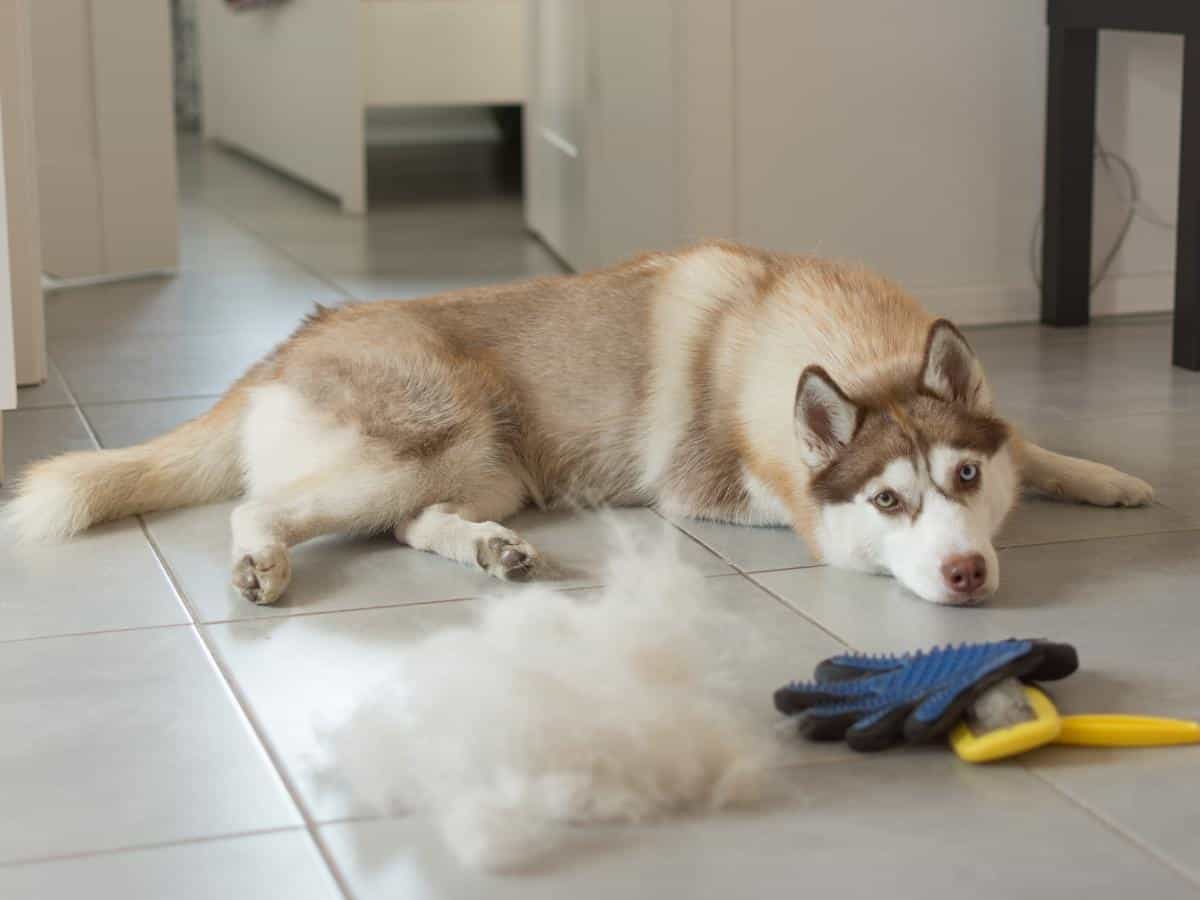
FAQs
Will shaving my Husky reduce shedding?
Never shave your Husky, as it will not help reduce shedding. Shaving a dog with a double coat will cause irritation, expose him to infection, and damage the regrowth. Shaving also interferes with your Husky’s natural temperature regulation and exposes him to extreme heat and cold.
The fur in a Husky’s coat is not the same as human hair; it has a distinct function, and the fur follicles do not regenerate properly. Unless there are legitimate health reasons, you should not shave your Husky’s hair.
How often should I groom my Husky to reduce shedding?
Regular grooming is essential to manage Husky shedding, including brushing their thick fur at least once weekly to remove loose hair and prevent matting. Additionally, incorporating supplements rich in omega-3 fatty acids, such as fish oil, can help improve the quality of a husky’s coat and reduce shedding.
Can regular bathing help with Husky shedding?
While bathing won’t stop your Husky from shedding altogether, it can help manage loose fur. Bathing followed by thorough brushing helps remove dead hair and reduces what ends up on your floors. Just be sure not to bathe your dog too frequently, as frequent bathing can dry out their coat.
How can I prevent Husky fur from getting all over my clothes and furniture?
Brush your Husky daily using a fur rake or slicker brush to remove loose hair before it gets everywhere. You can also use a pet hair removal roller or sticky roller on your clothes to catch fur. Consider keeping your pup off upholstered furniture to minimize fur embedding in fabrics.
Let’s Wrap This Up!
Husky shedding is a normal daily occurrence. They shed even more in the spring and fall when they molt their undercoat. Abnormal shedding can be caused by a poor diet, health conditions, fleas, parasites, or dehydration.





